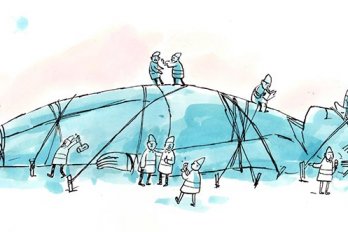Before pretty middle-class girls like Amanda Todd and Rehtaeh Parsons were apparently shamed to death; before teenagers started trading gang rape photos like baseball cards; before the word “cyberbullying” made its snickering entrance into our lexicon (Canadian Bill Belsey is said to have coined the term at the turn of this century); before media became social and “trend” became a verb, there was a novel by William Golding called Lord of the Flies, published in 1954 and set during wartime. All of the stranded boys on the island—hunters and prey—cried when the naval officer rescued them in the end, because in the absence of adult guidance they had turned into savages. Perhaps they were just imitating their military fathers.
Most of us living in affluent nations do not share that experience of war, but we have found other ways to inflict pain, and our children are still imitating us, says Wayne MacKay, a law professor at Dalhousie University and chair of the 2011 Nova Scotia Task Force on Bullying and Cyberbullying. Professional athletes, reality TV stars, talk radio hosts, rappers, even politicians have turned verbal cruelty into entertainment. Amid this widening social debasement, we gave our children powerful, relationship-warping technologies and left them stranded on an island. (We thought they were just phones.)
It is one thing to suffer a daily gauntlet of taunts and shoves in school hallways because you’re gay, Aboriginal, unattractive, or vulnerable—a deeply traumatic experience and, according to surveys, still the most common form of bullying. But this part is new: you retreat to the supposed safety of your home, where you discover some embarrassing picture of yourself circulating on Facebook, and an inbox full of peer disdain. Given the impracticality of disconnecting entirely from today’s communication technologies, you might well feel that you have no escape.
In the wake of cyberbullying-related suicides, parents and politicians are demanding tougher laws. As an outgrowth of MacKay’s task force, for example, the Nova Scotia Cyber-safety Act has mandated a dedicated investigative unit to identify perpetrators and streamline prosecution. Amendments have also been made to the province’s Education Act, to give principals authority over bullying off school property and after hours. When Rehtaeh Parsons’ parents met with Stephen Harper in April, Ottawa promised a full review of the Criminal Code to address legislative gaps, particularly regarding child pornography and harassment.
However, McGill University education professor Shaheen Shariff cautions that new laws alone risk criminalizing teenage behaviours that have arisen, at least in part, through ignorance and neglect. The solution is more complex and time consuming: it requires changing attitudes. To that end, Shariff has launched Define the Line, a research and outreach program focused on teaching students, parents, educators, and policy-makers the difference between lawful and unlawful online behaviour, between fun content and hurtful content. But understanding that requires empathy, which MacKay says is diminishing in a society increasingly defined by remote communication and conveniently postpones the consequences of our actions.
Loss of empathy is particularly troubling because, if you believe some developmental psychologists, children are born aggressive as a survival mechanism, and they need help to change. “As they grow, they learn alternative ways of getting their needs met,” MacKay says in his report. “But that maturation process doesn’t happen naturally; it must be nurtured.” In other words, we need to start putting down our phones and playing a more active role in our children’s lives and in their schools. We need to go back to the island.




